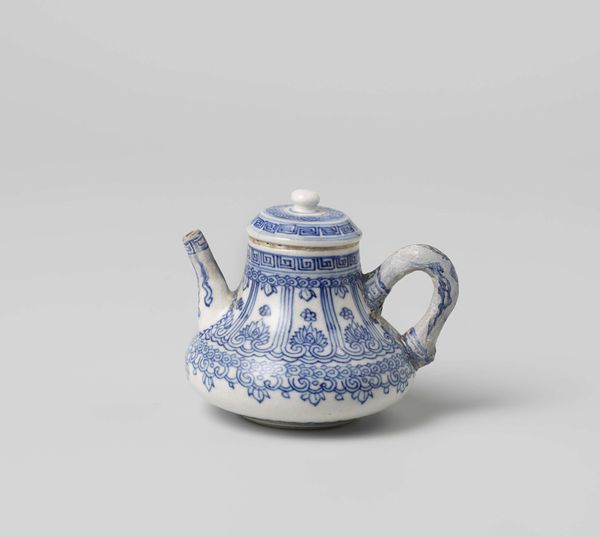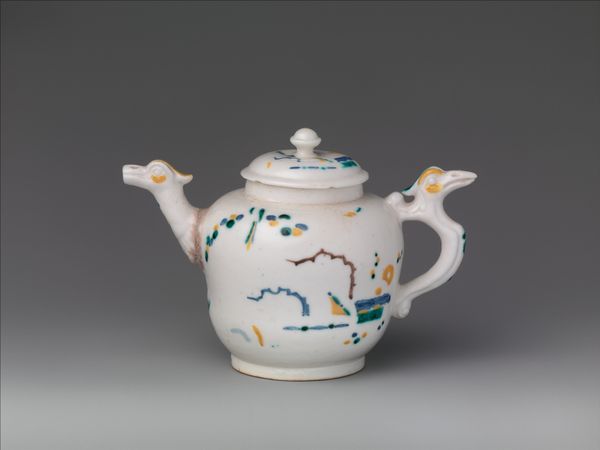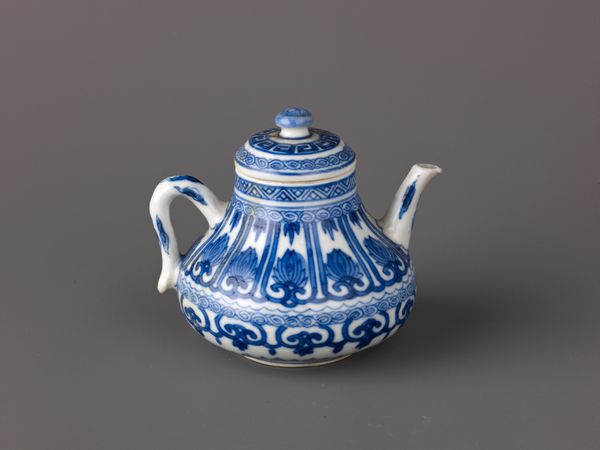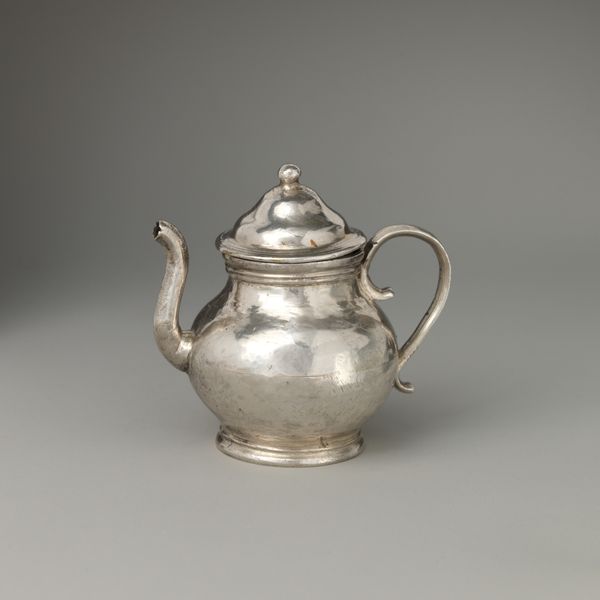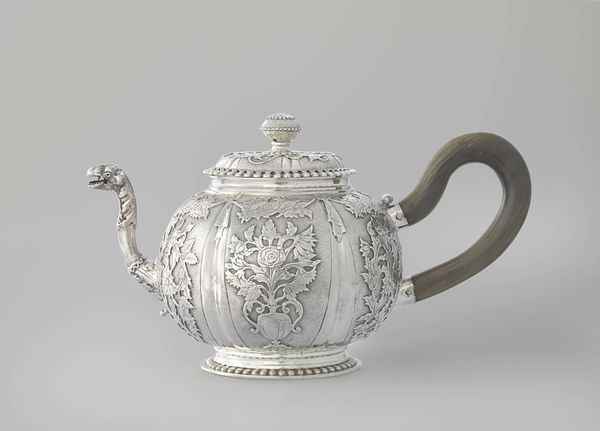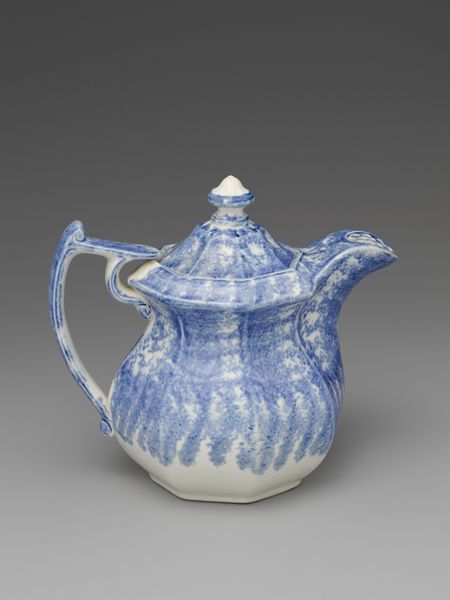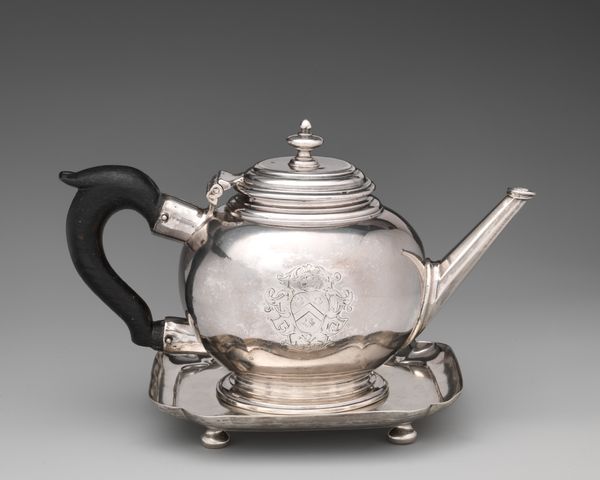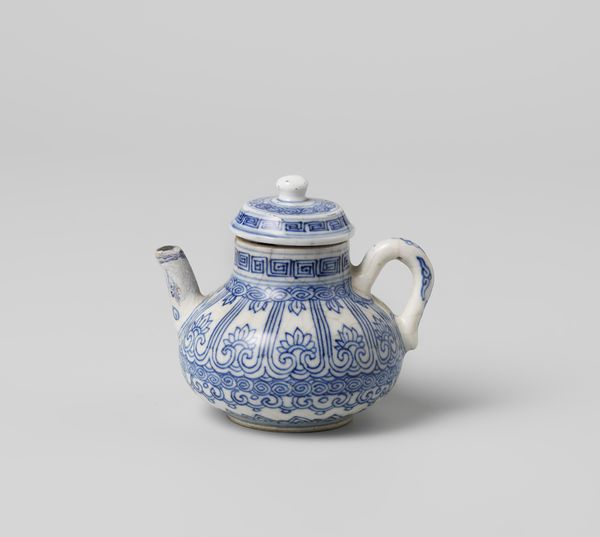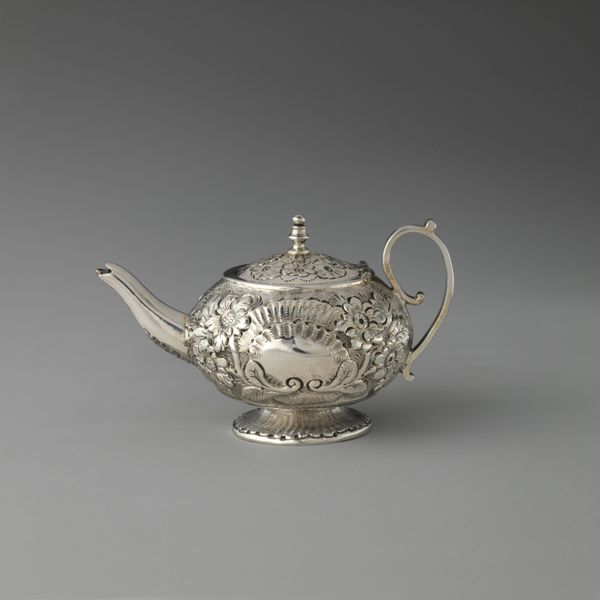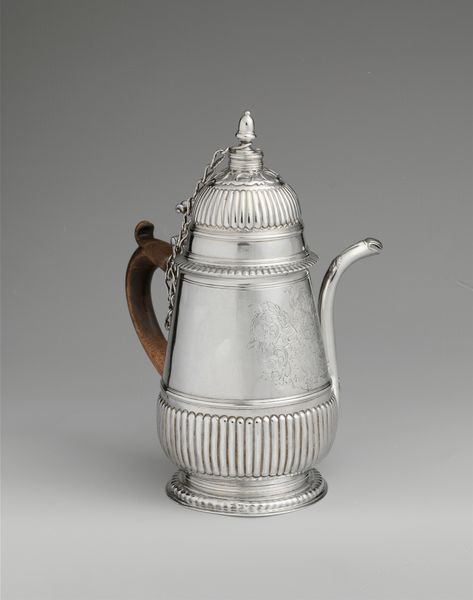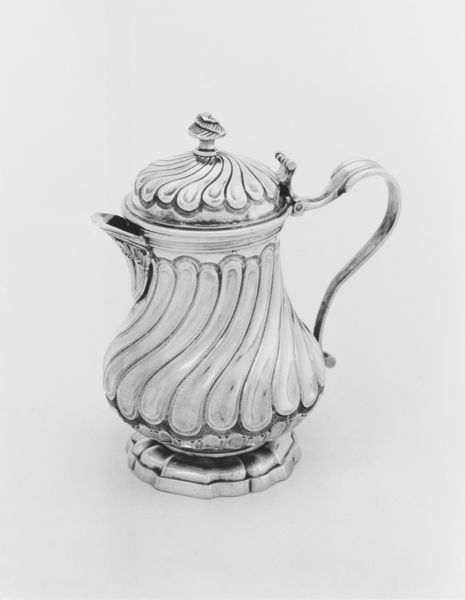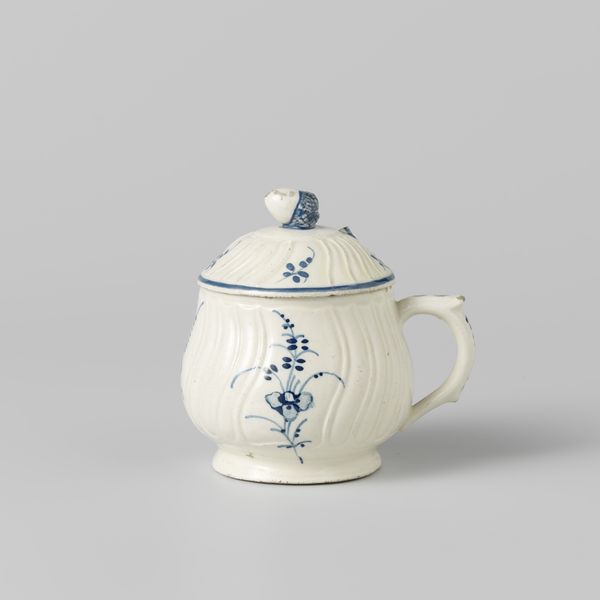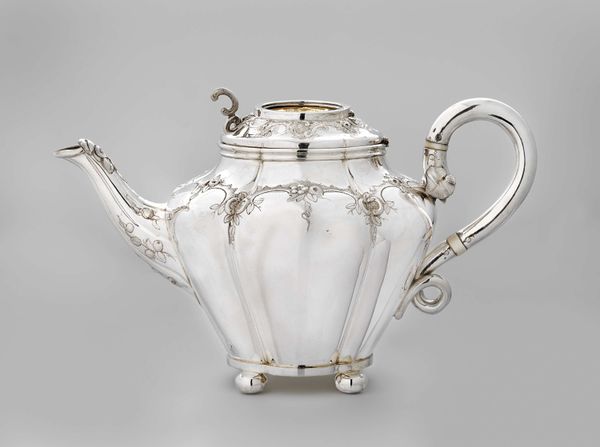
Dimensions: height 27.5 cm, diameter 9 cm, width 19 cm
Copyright: Rijks Museum: Open Domain
Editor: This is "Kan," a ceramic jug crafted between 1774 and 1784 in Loosdrecht, and currently held at the Rijksmuseum. It’s very ornate. I’m immediately struck by how the rigid, almost architectural lines of the handle contrast with the fluid, organic forms of the spout and base. What do you see in this piece from a formal perspective? Curator: The most prominent feature, from my view, is the dialogue between the geometric and the organic. Consider how the undulating curves of the spout are echoed, albeit in a more controlled manner, by the mauve banding around the body. Notice also how those vertical lines interact with the curves of the spout. Editor: I see what you mean. It’s almost as if the artist is intentionally setting up opposing elements and then trying to reconcile them through colour and pattern. Do you see a hierarchy in the elements? Curator: Yes, I'm inclined to agree with that. The whiteness of the ceramic serves as a crucial ground, a field against which the purple and gold details emerge, informing depth and perception. However, the squareness of the one handle seems out of place, almost clashing with the body. How do you respond to that discordance? Editor: Initially, I found it jarring, but now I see it as a deliberate interruption of the otherwise harmonious lines, thus drawing attention to the piece as an object and a construction. Curator: Precisely. Its geometric abruptness underscores the artificiality, its designed nature, and invites us to examine the principles by which the object’s structure works as a whole. We have the geometry and colors working together as an intentional dialogue. Editor: It’s amazing how analyzing its formal elements reveals so much about the artist's choices and the overall impact of the piece. Curator: Indeed. A careful look reveals a network of aesthetic intentions in this piece.
Comments
No comments
Be the first to comment and join the conversation on the ultimate creative platform.

